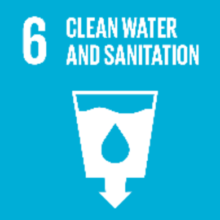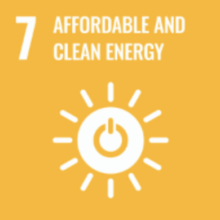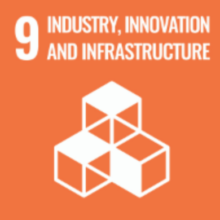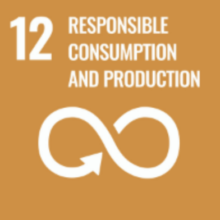19 May 2021
In my previous article “Aligning Your Logistic Asset With The Un Sustainable Development Goals,” I argued that integrating a certification plan into any new or existing constructions represents a quality assurance for the sustainable development of a building, easily achievable through a set of predefined guidelines to follow. The earlier we intervene in the design process, the more we can influence and guide the project towards a comprehensive integration of green building best practices to futureproof the asset.
The UN Sustainable Development Goals (UN SDG) address global challenges under 17 categories. The construction industry has an impact on eight of them. This third article provides an overview of all the SDG impacts related to logistic assets. This UN SDG framework analysis promotes best practices and would therefore increase an asset’s certification score through BREEAM (new construction, refurbishment, and in-use) or GRESB.
Good Health and Well-Being
To ensure healthy lives and promote well-being for all at all ages.

Daylighting is essential in terms of managing energy consumption and well-being, and it must be considered early in the design process. The average daylight factor for all office floor areas and all warehouse areas must address the BREEAM requirements. The best guidelines to follow are the CIBSE Lighting Guide 10 and British Standards BS8206 Part 2. Sky domes in warehouses also help to increase natural light and reduce electricity consumption; it is important to continue promoting this design. WELL and Fitwel certification schemes can support the design team to address key concepts of health and well-being and improve the tenant’s attractivity.
Clean water and sanitation
To ensure availability and sustainable management of water and sanitation for all.

Water is the 21st century’s petroleum, and just like petroleum, it is a limited resource and unevenly distributed across the globe. Therefore, the design of any warehouse needs to include a selection of water-efficient sanitary equipment (e.g WC with an effective flushing volume ≤ 3 litres, sink with a flow rate ≤ 3 litres/minute, showers with a flow rate ≤ 3.5 litres/minute, Urinals ≤ 0.75 litres/bowl/hour, etc.) with leak detection, general meter, and sub-meters to monitor the consumption and highlight any anomaly, as well as a plan to highlight a set of best practices on water-use and consistent monitoring. To go further, the following systems could be installed in all new developments:
- A rainwater harvesting system to collect roof water and reuse it in the building or to irrigate green spaces.
- If appropriate, a greywater system to collect greywater from showers, washing machines or dishwashers to reuse onsite for toilet flushing, landscape, and other non-potable uses.
- Sustainable urban drainage
Affordable and clean energy
To ensure access to affordable, reliable, sustainable, and modern energy for all.

The main energy targets are to reduce carbon footprint and reach a carbon-neutral or negative status. The development’s design team needs to promote sustainable energy to provide heating, cooling, electricity, and hot water. Solar panels are also increasingly becoming part of our urban landscape and are even mandatory according to some country’s regulations. Rooftop PV panels and/or carport PV systems increase onsite green energy production, and integrating electric vehicle charging stations will also encourage the use of electric vehicles. Renewable energy, such as solar PV, is the key to reducing operational CO2 emissions and achieve positive energy goals for a building.
For example, in France, the bill relating to the climate and energy (Décret tertiaire) calls for new commercial logistics warehouses with more than 1,000 m² of footprint, to integrate renewable energy production, revegetation (for thermal protection/biodiversity purposes) or equivalent processes on 30% of their roof surface. Based on our experiences, we encourage the integration of photovoltaic solar panels on 40% of an industrial building’s rooftop, of which a portion can be self-consumed on-site. Integrated from the design phase, it is then possible to think of a portfolio wide energy strategy such as promoting the self-sufficiency of technical equipment such as heat pumps and air handling units for heating and air conditioning. This raises the question of the best heating practices for the industrial warehouse part. Is a gas condensing boiler the best approach? A pre-study of the project makes it possible to assess the possibilities of integrating a biomass plant, wood plant, urban heating, geothermal or any other renewable source, depending on the site characteristics. This assessment will help to promote the most appropriate recognize local (on site or near site) low or zero carbon energy sources for the building or development.
Industry, innovation, and infrastructure
To build resilient infrastructure, promote inclusive and sustainable industrialisation and foster innovation.

To maximise the score of a project on a certification scheme, high energy-efficiency technical equipment and lightings must be utilised. LED lightings with smart controls are a minimum requirement for any new construction. Indeed, managing and reducing environmental impact through energy efficiency by installing LED lighting, sensor technology, optimal thermal performance to limit heat loss, efficient heating and cooling equipment and automated meters, leads to fewer operational carbon emissions from buildings.
The BRE explains in its BREEAM New Construction manual that the materials category is meant to “encourage steps to reduce the impact of construction materials through design, construction, maintenance, and repair”. It is essential to consider the full life cycle of a product in a Circular Economy (CE). The best approach is to combine, at the earliest stage of a project (the design stage), a CE strategy, a Life Cycle Assessment (LCA) and a Life Cycle Cost (LCC) analysis of the building to create an innovative holistic approach:
CE strategy – to create value for the economy, society, and business while minimising resource use and environmental impacts through reducing, re-use and recycling.
LCA – to measure the environmental impacts of products, services, and activities from cradle to grave. The project can go even further with a full embodied-carbon estimation.
LCC – to estimate the overall cost of an asset, throughout its life cycle.
These studies help the project’s design team in their choice of materials and technical equipment to reduce their ecological footprint and encourage local sourcing.
Responsible consumption and production
To ensure sustainable consumption and production patterns.

Responsible consumption and production drive high-end solutions to the logistic asset market and more generally the building industry. A building has a minimum lifetime of 50 years; in which many changes and replacements will occur. Implement a circular economy strategy management will help to be more responsible, reduce operational cost and promote strong values.
In term of recycling, it is important to note that the waste generated on-site might be recycled into as many as six different streams of waste. Additionally, a sustainable site should also minimize its use of landfills (at least <20% waste to landfills).
The operational waste of a logistic platform is estimated at the concept design stage by the owner or the tenant, and appropriate facilities are considered at the project to address this demand. Concretely, this represents specific areas for sorting and recovery of waste.
To accommodate potential future changes of the building use over its lifetime, a building-specific functional adaptation strategy study can be performed to provide as-built recommendations regarding accessibility, spatial adaptability, and expandability. This contributes to a longer building lifespan as it is more adaptable to future market needs.
Climate action
To take urgent action to combat climate change and its impacts.

This section highlights the importance of developing a robust carbon reduction strategy to drive innovation.
Refrigerants play an important role in the degradation of the ozone layer, and therefore in global warming. It is thus essential to promote refrigerants with a Global Warming Potential of ≤10, coupled to a leak detection system.
Similarly, it is important to limit direct and indirect NOx emissions via a commitment to a green electricity supplier, as well as to reduce the light and noise pollution over the entire site to preserve the local flora, fauna, and the potential neighbourhood.
The typical location of logistics warehouses have recently diversified and is no longer systematically located near a railway and/or river network. On the contrary, we are seeking to develop micro-distribution warehouses on the outskirts of urban areas. Located near major highways, the warehouse is outside urban areas, and users heavily rely on private vehicle transport to access the warehouse. Nonetheless, certain transport solutions such as electric vehicle charging stations and an asset-based bus/carpooling policy will contribute to a greener transport strategy for future building users.
At Longevity, our experts will help to define and implement an ambitious plan to reach sustainable targets and meet local regulations.
Life on land
To protect, restore and promote sustainable use of terrestrial ecosystems, sustainably manage forests, combat desertification, and halt and reverse land degradation and halt biodiversity loss.

An ecological enhancement plan allows the site to protect its wildlife and local habitat as well as promote native species and fruit species. This plan should include measures to protect existing ecological features from substantial damage from the site preparation to the construction phase. It should also promote and protect long-term biodiversity and the surrounding land. All these ecological features, unique to each site and location, must be maintained and managed throughout the life of the project.
Partnerships to achieve the Goal
To strengthen the means of implementation and revitalise the global partnership for sustainable development.

It is becoming essential to communicate to project stakeholders on the challenges of sustainable development and the targets that the project wishes to meet. This communication requires the involvement of multiple stakeholders at all key stages of the project.
To achieve this goal, the implementation of an environmental and/or energy management (ISO 14001, ISO 50001 or equivalent) scheme is highly recommended. This choice can be supported by a long-term vision to reduce the emissions from the logistic asset class across a portfolio and meet the Paris Climate Agreement objectives by 2050. A crucial part of this will be to create a post-occupation evaluation program, to enhance tenant engagement and consider the opinion of the occupants in their daily use of the asset. Following these guidelines will increase tenant engagement, provide a higher-quality environment for employees, and support the local community.